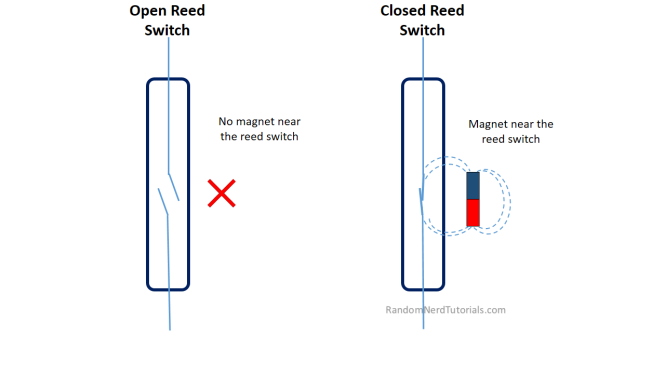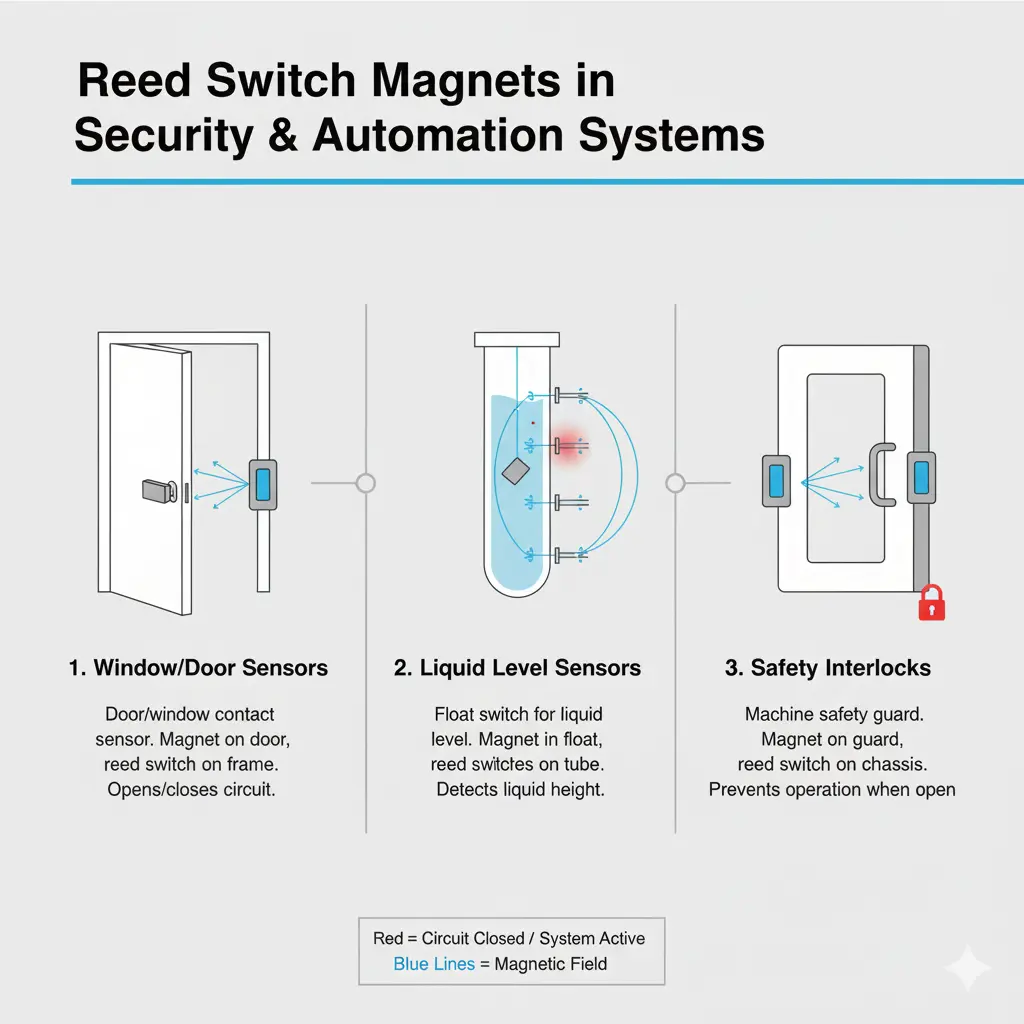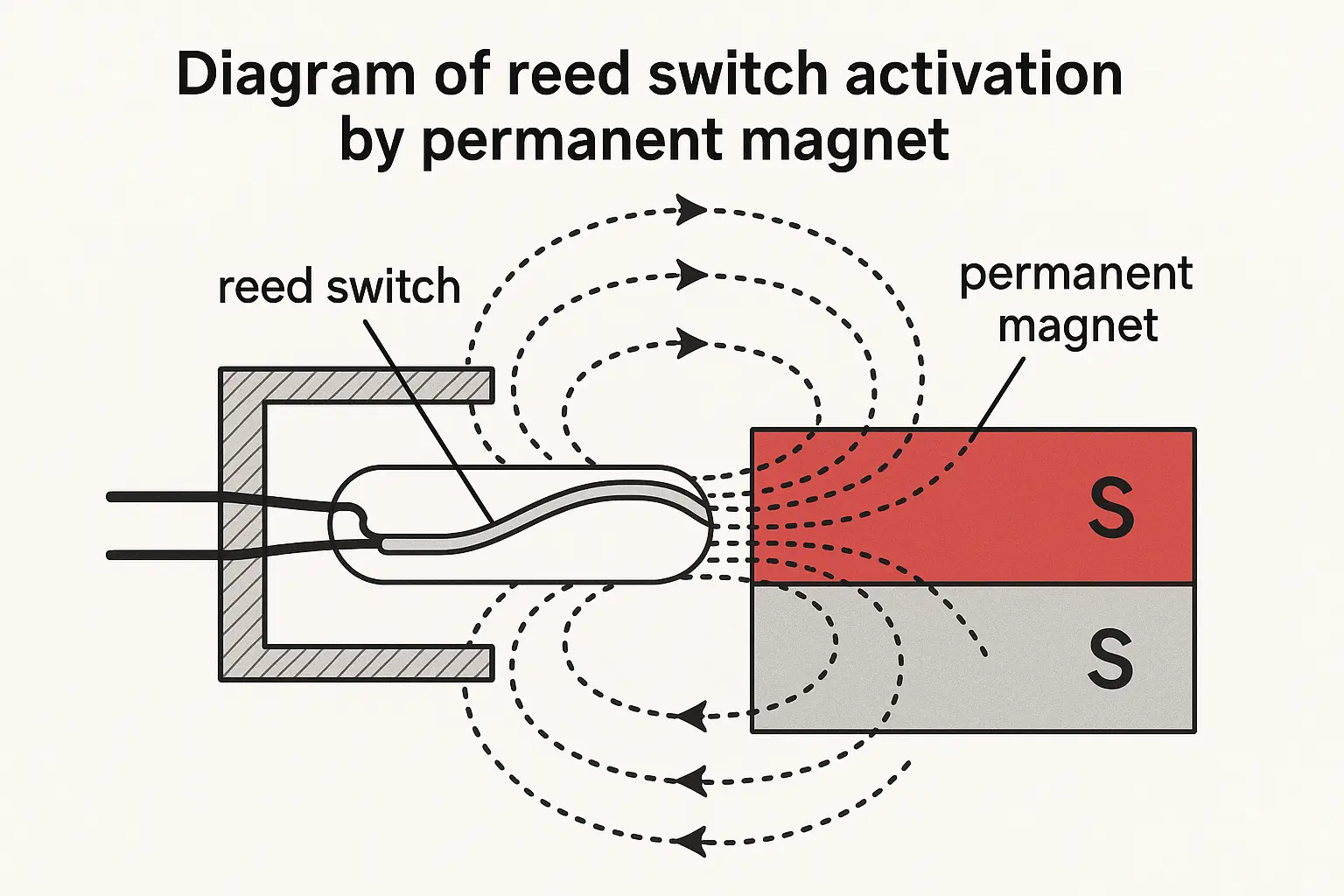Reed switches are widely used in sensors, security systems, and automation equipment — and at the heart of their operation is a magnet.
As a professional magnet manufacturer and supplier, we not only understand how reed switches work, but also how to provide the right type of permanent magnet to ensure stable, reliable activation.
In this article, we’ll explain how magnets activate reed switches, the working principle behind them, and the best magnet materials for your reed switch application.
How a Magnet Activates a Reed Switch
A reed switch consists of two ferromagnetic blades (reeds) sealed inside a small glass tube. These blades are slightly separated and plated with hard metals for durability. When exposed to a magnetic field, the blades become magnetized and attract each other, closing the circuit.
Activation process:
- Magnetic field introduction – A permanent magnet or an electromagnetic coil creates a magnetic field around the reed switch.
- Magnetization of blades – The reeds gain opposite magnetic poles.
- Contact and conduction – The blades attract each other, closing the circuit.
- Return to open state – Removing the magnetic field lets the reeds spring apart, breaking the circuit.
For most applications, permanent magnets are preferred because they are compact, reliable, and require no electrical power to operate.

Best Permanent Magnets for Reed Switch Activation
Choosing the right magnet is critical for reed switch performance. Here’s a guide to the most common materials:
1. NdFeB (Neodymium Iron Boron) Magnets
- Features: Extremely strong magnetic performance in a compact size.
- Advantages: High remanence, high coercivity, ideal for space-limited designs.
- Applications: Security sensors, high-precision electronics, automation systems.
- Considerations: Sensitive to high temperatures and moisture — surface coatings are recommended.
2. Ferrite (Ceramic) Magnets
- Features: Cost-effective, good corrosion resistance.
- Advantages: Stable magnetic performance, low price, ideal for mass-market products.
- Applications: Door and window magnetic sensors, general reed switch uses.
- Considerations: Lower magnetic strength compared to NdFeB; requires larger size for same activation distance.
3. Samarium Cobalt (SmCo) Magnets
- Features: Excellent temperature and corrosion resistance.
- Advantages: Maintains stability in high-temperature and harsh environments.
- Applications: Aerospace, military, and industrial reed switch systems.
- Considerations: Higher cost than other magnet types.
4. Alnico Magnets
- Features: High remanence, stable performance over a wide temperature range.
- Advantages: Good for applications with frequent temperature changes.
- Applications: Special instrumentation and sensors.
- Considerations: Lower resistance to demagnetization; not ideal in strong external magnetic fields.

Why Choose Us as Your Reed Switch Magnet Supplier
We manufacture and supply a full range of NdFeB, Ferrite, SmCo, and Alnico magnets tailored for reed switch activation.
Whether you need miniature high-precision magnets for compact sensors or durable, high-temperature magnets for industrial applications, we can provide:
- Custom shapes and sizes for optimal activation distance.
- Special coatings to improve corrosion resistance.
- Consistent magnetic performance through precision manufacturing.
- Technical support to help you select the right magnet for your reed switch design.
Conclusion
A reed switch is only as reliable as the magnet that activates it. By choosing the right magnet material and specifications, you can ensure stable operation, long service life, and consistent performance in your application.
If you’re looking for high-quality magnets for reed switch activation, contact us today — we’re here to help you design and supply the perfect solution for your needs.


Leave a Reply